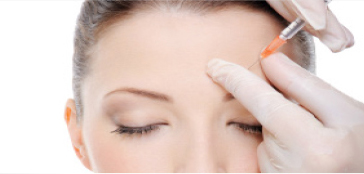Treatment of Acne Scars
Most acne scars are depressed because apply pressure on the tissue underneath.
Acne scars - There are 4 types of acne scars:
- Hypertropic scar - looks like a small lump on the face skin. The only one with excessive scar tissue.
- Ice Pick scar – a small local depression.
- BoxCar scar – a wide rectangular depression.
- Rolling scar – wave-like depressions on the skin.
Usually scars appear in a combination of types. The treatment will be performed only after an accurate diagnosis of the scars.
It is important to note that it is impossible to completely conceal the scars without any signs. Scars can be smoothed-out, faded and filled. Each body reacts differently to the treatment and even each scar can react differently (on the same face).
Treatment of acne scars
It is preferable not to perform any treatments during periods of active acne or while the patient is treated with roaccutane (isotretinoin).
The existing treatments are:
- Filling the scar with a permanent or absorbable filling material, just like filling wrinkles. A temporary filling material can also be used for immediate, but temporary, relief. For long term results, pure medical silicone will be injected, using the micro-droplet method. This process is longer and the results will be seen only after 3-4 treatments.
- Subcision – cutting-off the ‘bottom’ of the scar from the sub-skin tissue. The procedure is performed under local anesthetic. As a result the underlying tissue is able to rise and cause the skin to be even and smooth. Recovery time is approximately 2 weeks. During recovery the patient may suffer from hemmorage and edema but the pain is not significant. The procedure is usually performed in cases of Rolling acne scars.
- Medium peeling in three stages.
- Deep peeling.
- Peeling with CO2 or Erbium laser.
- A combination of peeling and filling.
* As a supplement to the treatment the patient can use an active cream, developed by Dr. Imas, which is adapted to the type of skin and the state of the scars and pits. Kelocote and Mederma creams can also be used.
Treatment of Scars (caused by injuries or surgeries)
A scar is a sort of skin healing, but since the skin cannot renew itself in the deep layers, it forms a new scar tissue.
There are several types of scars:
- hypertropical protruding scar - scar tissue protruding above the skin. It usually appears a month after the operation and could disappear a year later. Typical to areas with high skin tension.
- Keloid scar - scar tissue protruding above the skin and much larger than the original surgical incision. It could appear several months after the surgery and develop indefinitely. The tendency to develop Keloid scars is hereditary.
- Wide scar – a scar that widens with time until it reaches the size of the of the original skin or even beyond. They develop in areas of very thick skin.
- Scars that develop in wounds that were not properly stitched or not stitched at all – can usually be treated by surgical intervention.
Treatments:
Treatment of hypertrophic scar
- If the scar is relatively tender it is best to start with creams such as Kelcote (silicone gel) or Mederma (onion extracts).
- If it does not improve with creams, Dr. Imas injects a special filling material, based on a unique Dr. Imas formula, to smooth-out and fade the scar. There might be 2-6 sessions, depending on the severity level of the scar.
- An additional innovative treatment for “stubborn” hypertrophic scars is freezing the scar with liquid nitrogen. It destroys the thick scar tissue and flattens it.
- Fading the scar with innovative laser guns.
- Surgical action for protruding extra “stubborn” scars – cutting off the base of the scar and detaching it from the sub-skin tissue. The procedure is performed under local anesthetic.
Usually medium results. Keloid scars tend to reappear.
Wide scar treatment:
The common procedure is full surgical removal of the scar under local anesthesia. If the scar is in a high-tension area, there is a chance it will reappear.
If it is a depressed,not very wide scar, it can be filled by temporary and permanent materials or with body fat.
Scars that develop in wounds that were not properly stitched or not stitched at all:
can usually be treated by surgical intervention. Usually the results are good.












